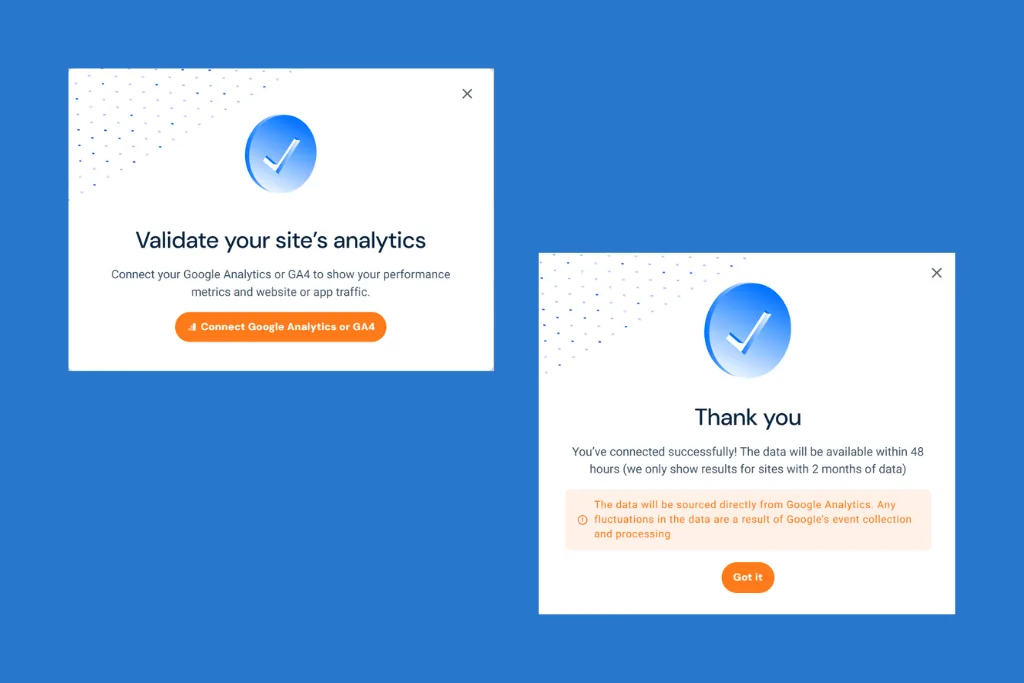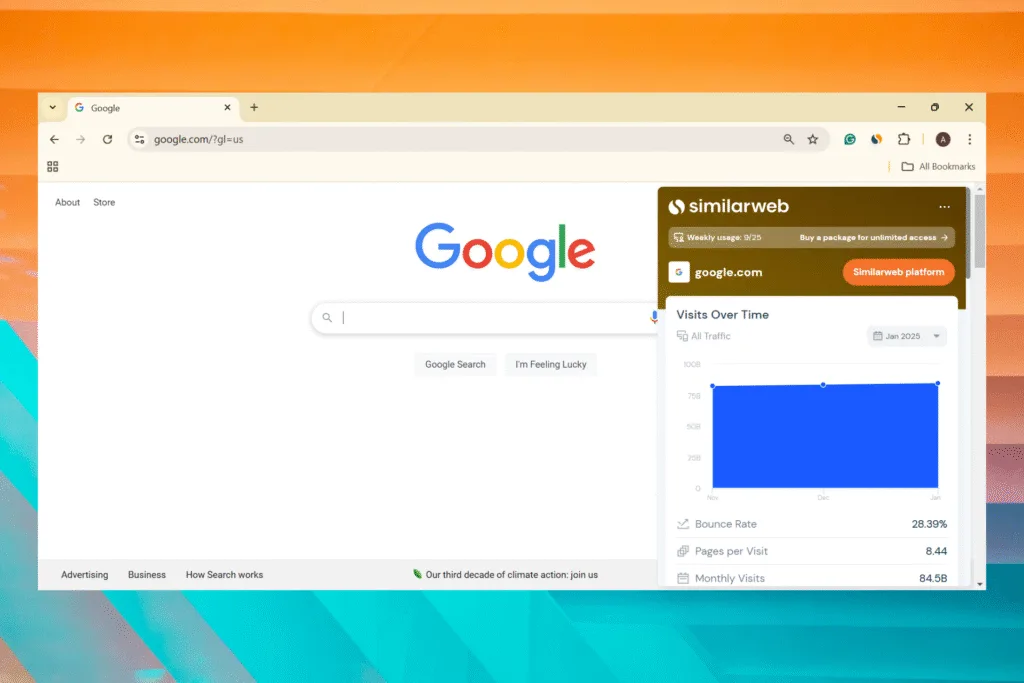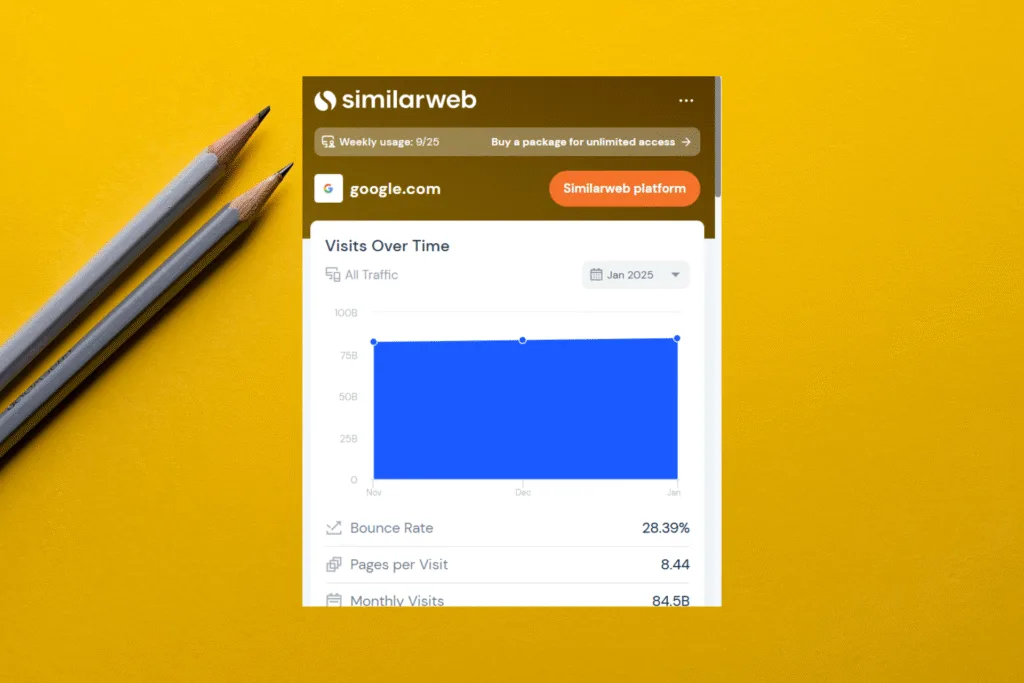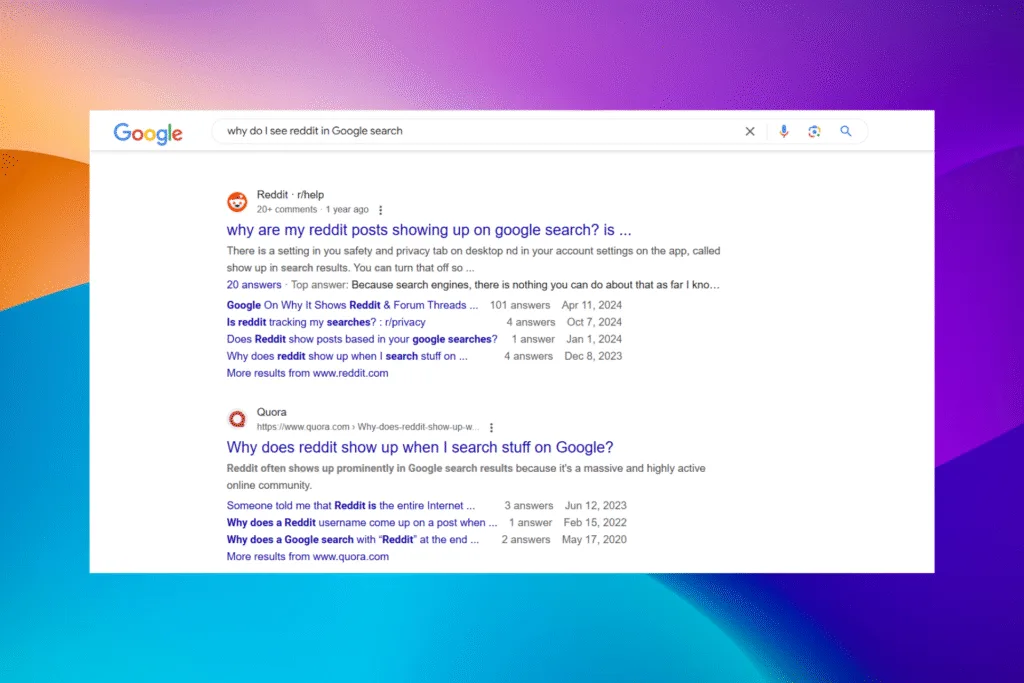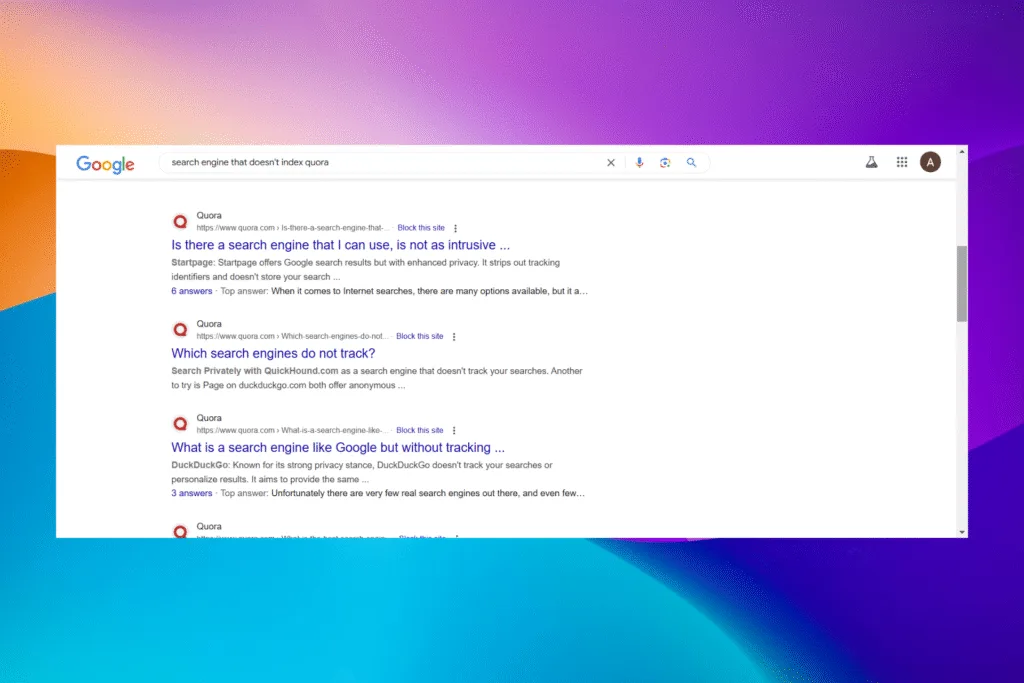If you find Similarweb’s data inaccurate or often way off the mark, there’s an easy way to fix things. Simply connect your Google Analytics or GA4 to Similarweb!
But when you search the web for the steps to connect GA to Similarweb, there’s very little information available. Even what’s available is, in some cases, outdated. So, if you want to link Google Analytics or GA4 to Similarweb, follow the steps listed next. The entire process takes less than two minutes.
How can I connect Google Analytics or GA4 to Similarweb?
- Log in to Similarweb, create a new project, and then click on Connect GA.
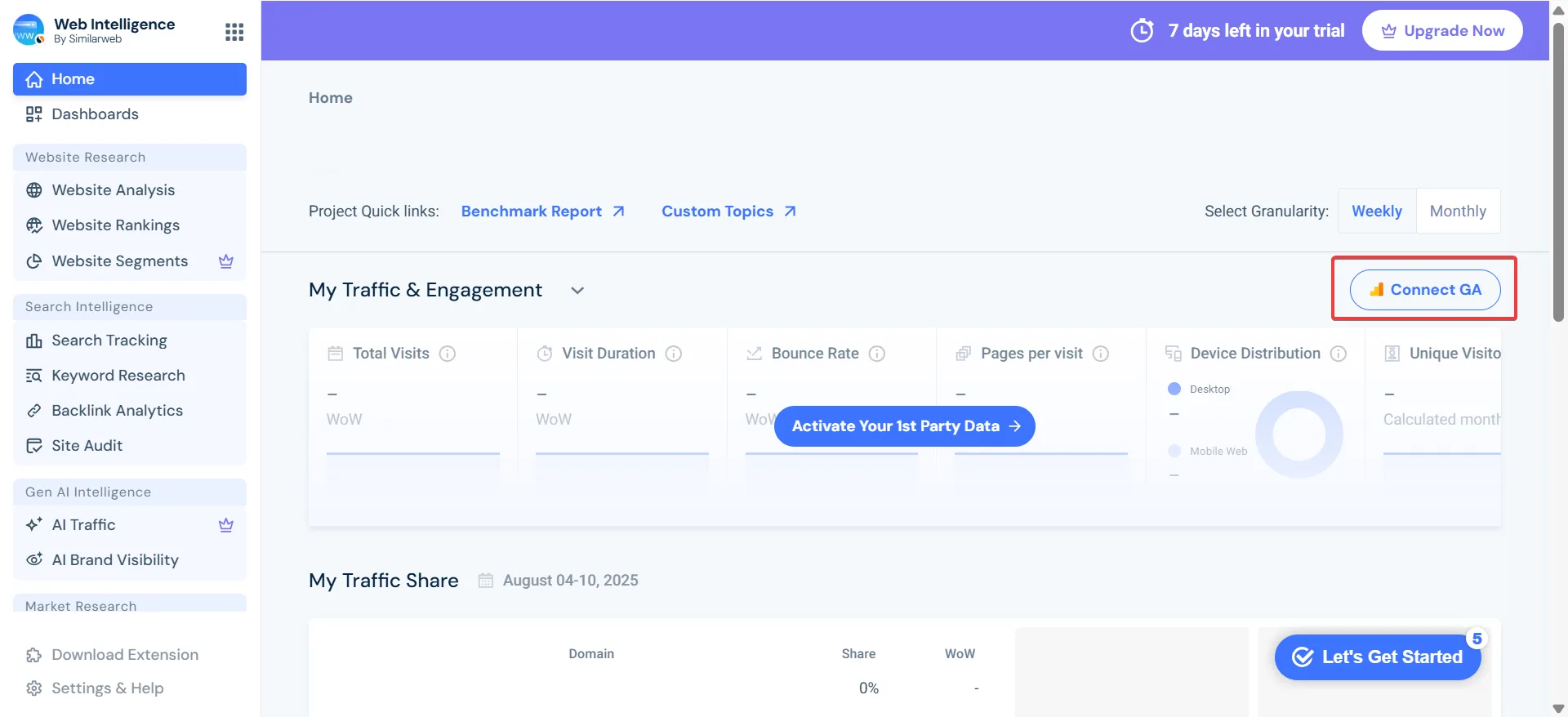
- Next, click on Connect Google Analytics or GA4.
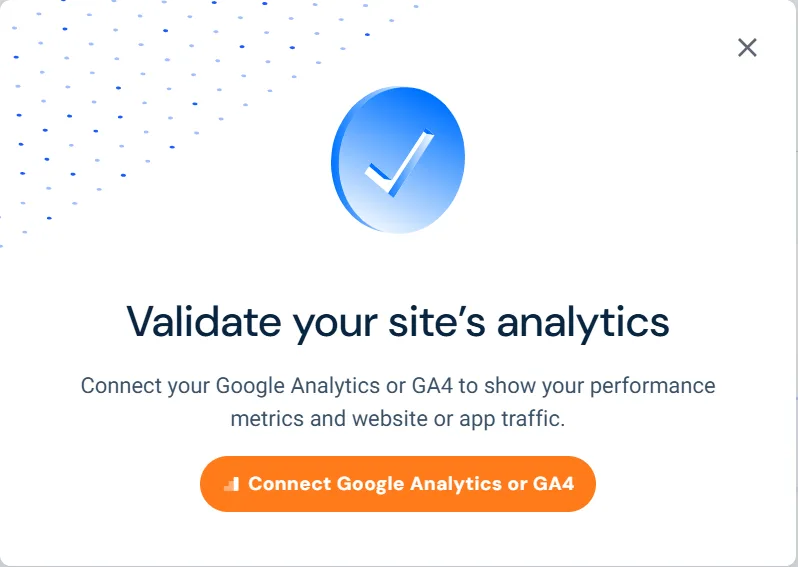
- Choose the Google account that is linked to Google Analytics or GA4. If it doesn’t appear in the list, sign in using the credentials.
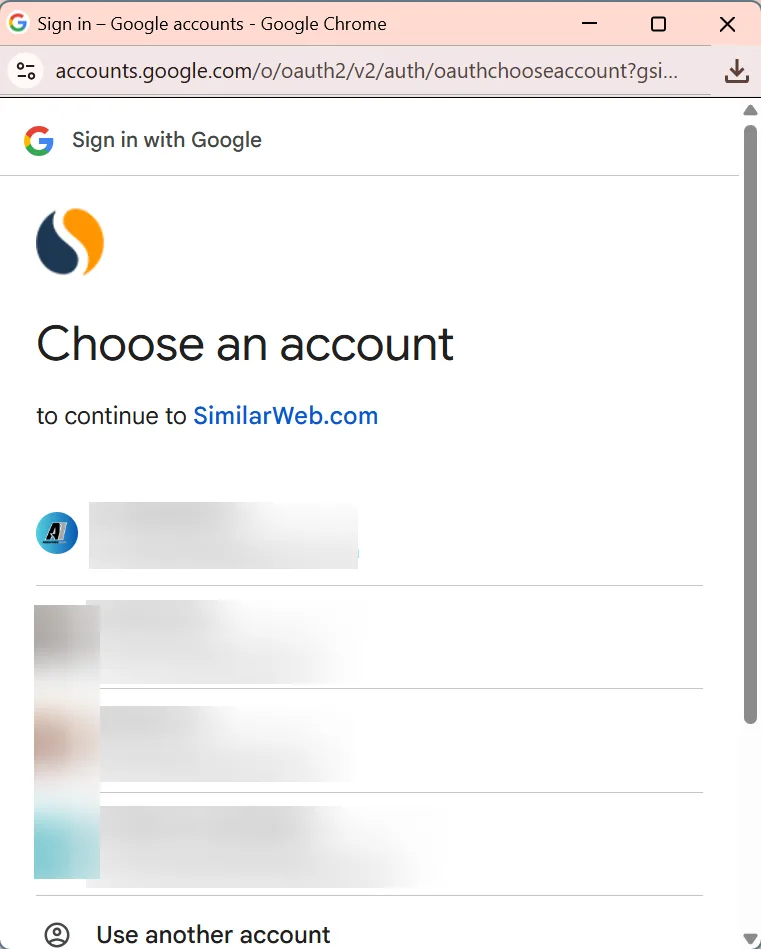
- Now, select the site(s) for which you want to add GA or GA4 to Similarweb, and click on Next. Also, the Publicly Available toggle at the top lets you configure whether you want this data to be shown to the public or not.
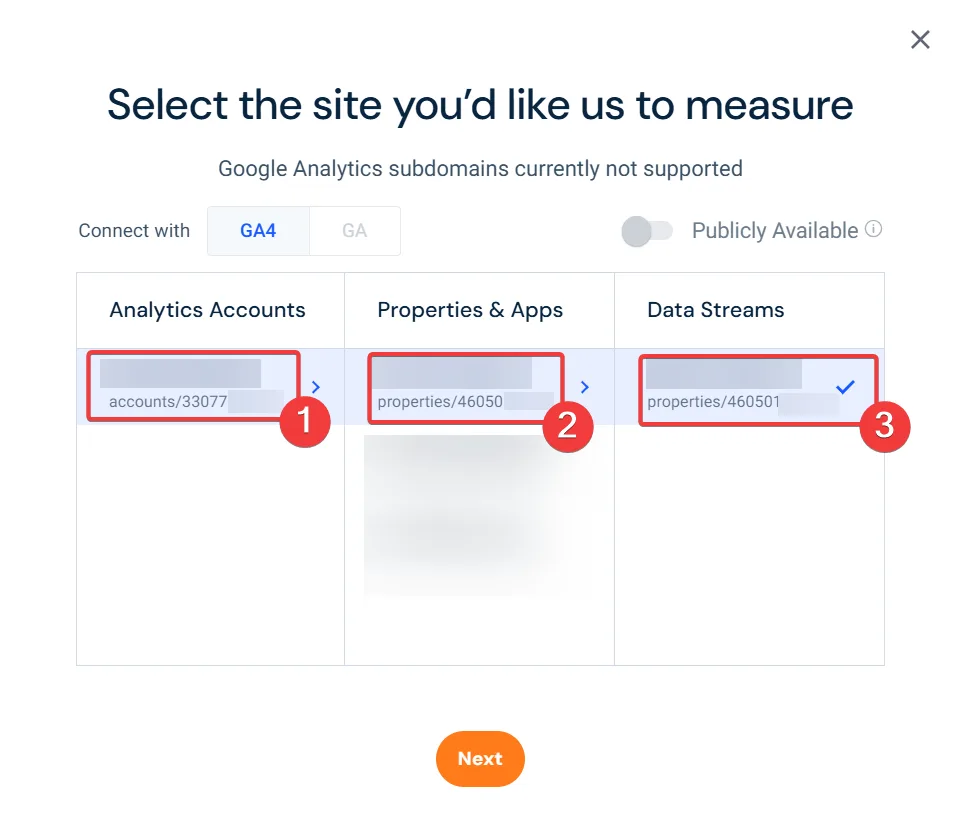
- Now, wait for Similarweb to source data from Google Analytics or GA4. The provided wait time is 48 hours, but the data usually appears much sooner.
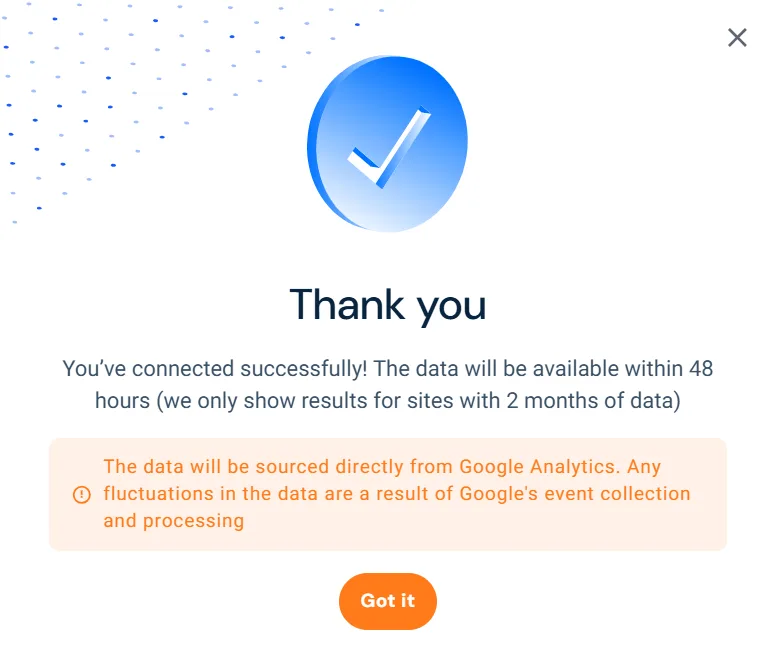
You now know how to connect Google Analytics with Similarweb. But what’s the need for this, and why are so many doing it?
- Makes Similarweb a one-stop solution: Instead of navigating between platforms and collating data, you get a more seamless view. This makes it easier to spot growth opportunities, optimize the workflow, and track results all in one place.
- To boost credibility: Similarweb often shows incorrect traffic, as has been seen in my research on Similarweb’s reliability. In such cases, turning on the Publicly Available toggle will boost credibility. This way, potential clients will be able to better gauge your domain’s potential, resulting in more favorable deals.
That’s all for today. Do let me know how long Similarweb took to source the data from Google Analytics for you, in the comments section.
Before you leave, find out what to do when Similarweb shows 0 visitors!

With over five years of experience in the tech industry, Kazim excels at simplifying complex topics, making them accessible to tech enthusiasts and general readers alike. He has contributed to several renowned publications worldwide, including WindowsReport and Allthings.how, bringing insightful coverage of key developments in the field.
Kazim has extensively covered the Windows ecosystem, from the early days of Windows 7 to Windows 11. Unlike many in the field, he’s optimistic about Windows 11, calling it the most user-oriented iteration to date.
When he’s not writing, you’ll find Kazim planning weekend getaways or diving into tech verticals beyond his expertise.

